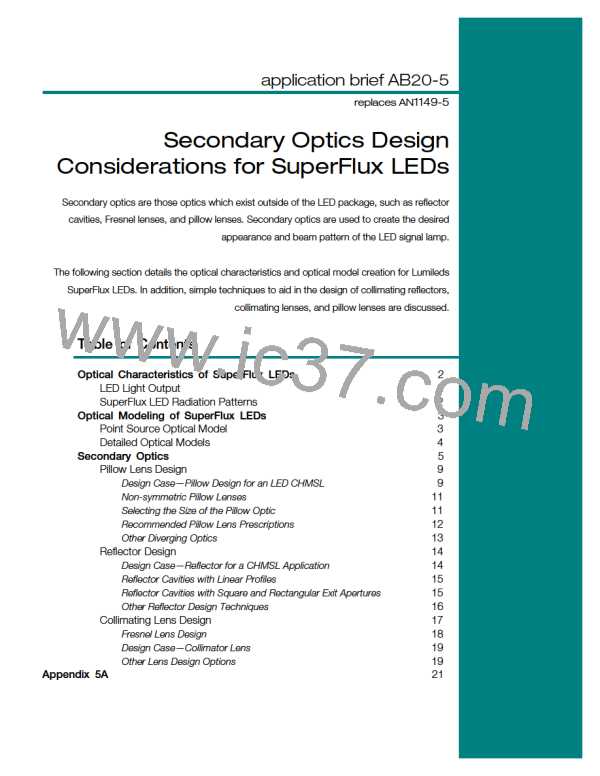Appendix 5A
Flux Integration of Rotationally Symetric Radiation Patterns
Substituting Iv(q) into (6) we get:
F v(q) = 2 p cosq sinq dq
The cummulative flux as a function of angle
from the optical axis (Figure 5.2) can be
ò
(7)
= p sin2 q
calculated from the radiation pattern (Figure
5.1). This calculation is simple for rotationally
symetric radiation patterns and is shown below:
Intensity is defined as the flux per unit solid
angle, or
This equation can be rearranged to solve
for flux.
F v = Iv w
(2)
(3)
F v = ò Iv d w
Figure 5A.1 Graphic explanation of flux integration
technique.
Solid angle, w, as a function of q can be
determined with the aid of Figure 5A.1.
dw(q) = 2 pt sinq dq
Assigning a value of r=1, this equation becomes
dw(q) = 2 p sinq dq (4)
(4)
and substituting (5) into (3) we can solve for
F v(q).
F v(q) = 2 p òIv (q)sinq dq
(6)
Figure 5A.2 Rotationally symmetric, lambertian
radiation pattern.
Consider the case where the LED has a
rotationally symetric, lambertian radiation
pattern as shown in the Figure 5A.2.
21

 LUMILEDS [ LUMILEDS LIGHTING COMPANY ]
LUMILEDS [ LUMILEDS LIGHTING COMPANY ]